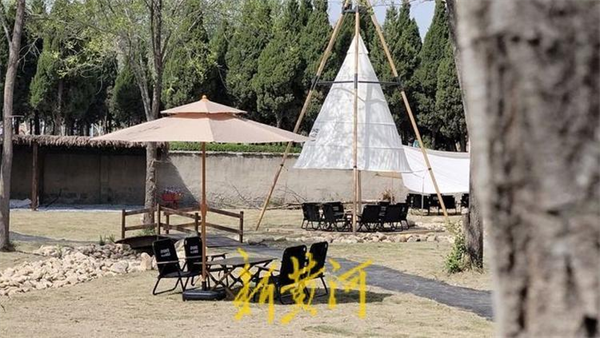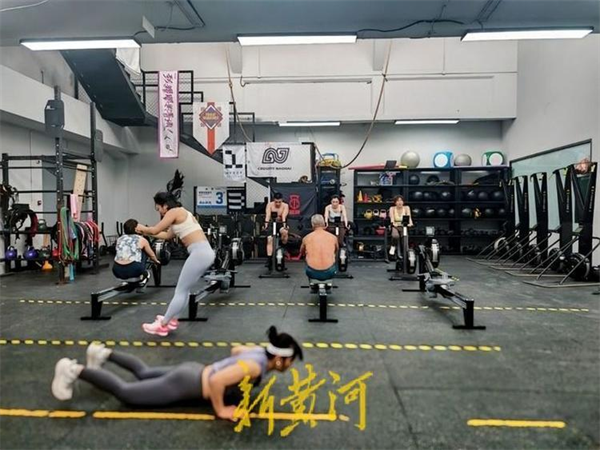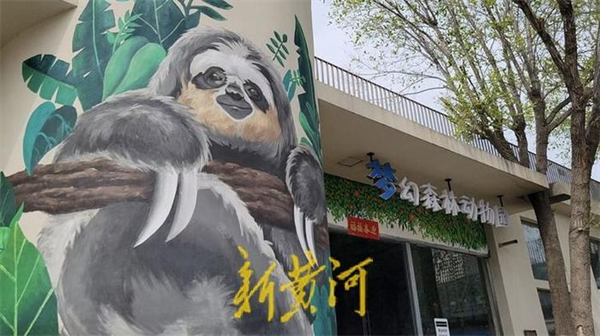From Derelict Factory to Urban Oases: Yantai’s Industrial?Park Writes a New Chapter in Cultural Tourism with Industrial Heritage
The iDesign Cultural and Creative Industrial Park in Zhifu District, Yantai, presents a charming artistic scene where rows of Russian-style spired-roofed buildings blend harmoniously with greenery. Previously, this area housed the long-abandoned Yantai Third Cotton Spinning Factory. Now, it has been revitalized into a vibrant urban “oasis” that integrates industrial heritage with slow-living experiences.

Revitalizing Industrial Heritage
The Xinhuanghe reporter learned that the former Yantai Third Cotton Spinning Factory was designed and established in 1962 with the involvement of Russian architects. The park retains over 30 spired-roofed factory buildings that preserve the Russian architectural style of the 1960s. “Each spire-top carries the memories of the industrial era, and we’ve given them new functions through modern design,” explained Ju Junchao, the founder of the industrial park. In 2022, the iDesign Cultural and Creative Industrial Park began construction, bringing new life to the long-abandoned old factory buildings. During the renovation process, the team cleared debris, repaired water and electricity facilities, and incorporated modern elements into the exterior facades. This approach preserved industrial features like red bricks and steel frames while introducing businesses such as cafes, western restaurants, and indoor zoos, creating a unique style of history meeting modernity.
Notably, the park is committed to creating a zero-carbon environment. By installing solar photovoltaic panels, it reduces reliance on traditional energy and cuts energy consumption and pollution to support China’s goals of carbon neutrality and peak carbon emissions.
Multiple Formats Create a New Cultural Consumption Landmark
According to reports, currently, several merchants like Green Peaks & Stream, Nine Spaces, and Naohai have already opened in the park, offering multiple formats including designer studios, parent-child entertainment parks, art tea rooms, gyms, and zoos.

According to statistics, the renovation of the park covers an area of 16,000 square meters with over 80 signed merchants. Once completed, the project is expected to generate annual sales of 600 million yuan and an annual tax revenue of 50 million yuan, becoming a new cultural consumption landmark in the southern part of Zhifu District.

Beyond providing leisure spaces, the park focuses on the design industry ecosystem. Ju Junchao told the reporter that over 100 designers across 20 specialties, including architecture, fashion, and animation, have settled here, forming a designer community at the doorstep. The park offers comprehensive design support in branding planning, graphic design, and spatial planning, significantly reducing operational costs for merchants and attracting companies to establish themselves here.
The reporters have learned that in recent years, Zhifu District has actively revitalized idle resources in the area and driven projects to start construction on time, focusing on the iDesign Cultural and Creative Industrial Park to integrate tradition with modernity, blend retro and trendy elements and allow old factories and idle lands to gather new momentum. As Ju Junchao stated in an interview, “Industrial heritage is the DNA of a city. Only by balancing protection and development can we truly make history live in the present.”
Xinhuanghe Reporter: Liu Haikui

